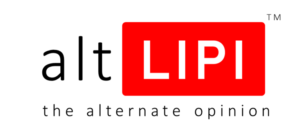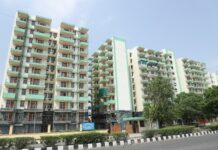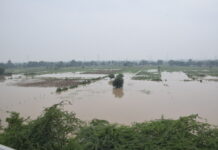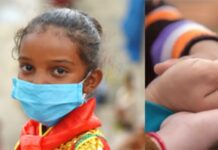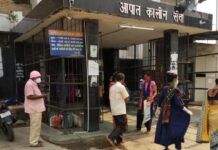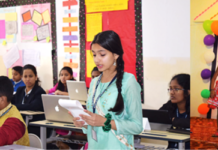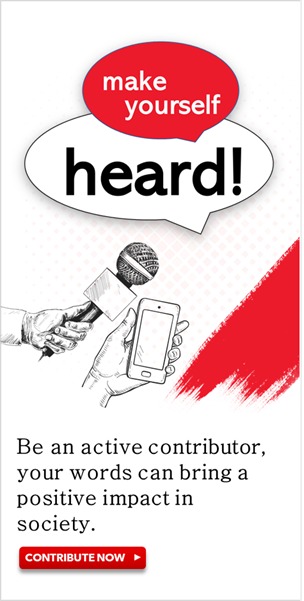The first thing that comes to mind when we hear the phrase “Gay Pride” as millennials and Gen-Z is streets filled with people throwing glittering confetti holding aloft flags and banners representing their respective sexual orientation, embracing partners, families, and friends screaming and crying overwhelmed by joy, a familiar sight in many cities and metropolis. A vibrant rainbow flag represents the entire spectrum of genders i.e. lesbian, gay, bisexual, transgender, queer, asexual, and allies (LGBTQA) community.
This is what Gay Pride Month means to the millennials and Gen-Z, but what about those who represent other generations in India say Gen-X and even Gen-Y? How would they react to this unusual fête? It’s shocking to note that very few from the older generations know about pride month and its purpose. Even if they have knowledge about it, they choose not to break the topic.
In the 2010s, LGBTQA people in the country increasingly gained tolerance and acceptance, especially in large cities. This culminated in the Supreme Court’s verdict in 2018 legalising homosexuality in India by nullifying Section 377 that outlawed homosexuality as it infringed on the fundamental rights of autonomy, intimacy, and identity. However, there remains a significant amount of homophobia in our society with around one in four Indians objecting to same-sex relationships according to an opinion poll. This is despite strong political movements in favour of LGBTQA rights.
Against this backdrop, the gay pride month can play a significant role in educating the masses about the homosexuals and the significance of their inclusion in the national mainstream. Here is a brief profile of the gay pride month.
The history of Gay Pride Month goes back to 1970 when the first pride march took place in New York. India had its first Pride in 1999 in Kolkata with only 15 participants. Even though pride is being celebrated for about 22 years, it still seems to be an obscure reality for the older generation.
The question arises why Gay Pride Month is not given the pride of place that all the other festivals enjoy in the country. Why is it not being acknowledged by everyone as a festival in a country known for its tolerance and the all-embracing concept of unity in diversity? If we don’t make any distinction among indigenous celebrations and even observe festivals borrowed from far-off overseas lands, what stops us from accepting Gay Pride Month?
The indifference towards the commemorative month has something to do with the deeply embedded resentment and revulsion for anything different. Over the years, we have grown so intolerant that any divergent view or concept is greeted by instant denunciation and bogey of cultural assault. While a large section of the society views the association with the spectrum as an offense against Indian culture, there is no dearth of people who assert that it’s not an act, but a part of one’s identity.
What’s all the more intriguing is that there are many among us who treat any deviant sexual behaviour as an affliction from abroad especially the West. These are those who think homosexuality can be treated through medicine, religious rituals, black magic et al. For pride month to be recognised and celebrated the way it has to be, we need to start with laying down the foundation. To build a strong and healthy foundation, first, we need to educate the older generations about the LGBTQ community before working towards acceptance. Now, the question arises as to how to bring the oft-berated community into the social and national mainstream.
Let’s first accept the gay pride ourselves and start respecting every member of the community as allies or non-LGBTQA members. We need to convince ourselves and everyone around us that they deserve as much respect we heterosexuals. We should treat them just as we would treat our other colleagues, friends, family members, etc. Just by making sure they aren’t treated differently at a public place, workplace, or on any occasion, we can make a huge difference to their self-esteem. We can lend voice to their cause and bursting the myths and stereotypes surrounding them which are perpetuated by the mainstream media.
To start with, let’s take our parents and grandparents into confidence by apprising them about the issue subtly but tactfully. It’s a painstakingly excruciating process and we are not supposed to rush through it in our zeal. We can initiate the talk by speaking about all the sexualities on the spectrum we know of. We can do it in the order mentioned in the abbreviation LGBTQA using simple vocabulary. The easiest way to do it would be to use terms such as ‘like’, ‘have a so and so partner’.
Once we are done with all the explaining, it is easier for them to understand by gingerbread diagrams of sexuality. We can now educate them about terms like coming out which means to let people know about their sexuality and transitioning denoting a change in their external presentation permanently to their internal sense of gender. And finally, the word “closeted” meaning choosing to not let people know about their sexuality.
Eventually, we can move on to use pronouns of their preference. This might be a precarious process. Throughout the process of educating our elders, we need to be extremely patient, understanding, and receptive to their criticism on one hand and make sure we don’t shy away from delivering the right information, on the other. We can even take the help of science, history to bring home the points. Indian history can act as our ally through this process once we have crossed the most obstructed bridge towards a more accepting pride.
The next step is acceptance. We as allies might question why we as allies should work towards acceptance of the LGBTQA spectrum. As allies, we need to make it easier for the people of the spectrum to carry on their lives in the country. We can simply do this by not bullying people on the internet for their sexuality, their ways of expressing their sexuality, and by standing up for the community in non-violent ways.
We also need to make sure that we don’t stereotype the community and expect them to fit in the box we have created in our heads by the cardboard of our ignorance. We can also help the community by making sure our families and friends don’t use offensive slurs against them, by addressing these issues in a chivalrous manner.
The entire process seems tedious and time-consuming, but it’s worth the effort as it creates a healthier environment for the present and future generations of the LGBTQA community. It would make a huge difference in the suicide rates within the community which are excessive especially in the 15 -25 age group. We need to be supportive of them on and off the internet. Offline, we can support them by participating in pride parades as allies, signing more petitions that work on making their lives better, and simply being their friend in difficult situations where they are simply shunned because of their sexual orientation.
Since times immemorial, we have been taught to use the pronouns, “she” and “he”, for man and woman, respectively. Our languages have never evolved pronouns to address members of the LGBTQA community who belong to neither of the genders. This shows our inherent bias in favour of cisgender. To overcome this lacuna, members of the LGBTA community have recently started using pronouns of their choice in their Instagram profiles, different from the she-he binary. There is even a trend among these nonbinary persons preferring to be called “they”. We need to get accustomed to these pronouns and address them as such in deference to their sentiments howsoever odd they may sound to us. This will go a long way in restoring their self-confidence.
Once we have followed up all these steps, the pride months in the future would be filled with colours of joy, hope, and acceptance. As a nation, we can look forward to a more vibrant pride in 2022 even if it ends up being through a screen. Change starts from home, they say. Let’s educate ourselves and our loved ones about the pride, the LGBTQA community and accepting them for who they are. The legal declaration of 2018 changed the status of the community in India. Now, it’s time we citizens changed the mindset against the community by accepting them and loving them for what they are.
Disclaimer: We do undertake rigorous checks on content provided by contributors before publishing the same. If you come across some factual errors, kindly bring this into our notice and we shall review your objection and claim as per our policy and display correction credits and corrections on the article itself.
The opinion expressed in the article is of the writer. Writer is a freelance journalist/journalist based in Delhi
